First off, I visited 4 countries in Southeast Asia, Singapore, Bali (Indonesia), Cambodia and Thailand. These places seem similar to me in many ways. In the way I imagine an Asian person might see similarities in different European countries.
To me, the food is similar and the traditional clothing and fabrics are basically the same. The main garment for men and women is a 2 or 3 yard length of fabric wrapped around the hips and tied and/or twisted to hold it in place with variations in each country.
And silk production is found in all Southeast Asia, well I guess I guess in Asia as a whole. The silk worm, actually a caterpillar, is native to northern China. But, Cambodia is a special case because they are still recovering from the war in the 1970s that destroyed their country and economy. They have been working hard to reestablish traditional arts and manufacturing and the silk farm I visited is part of a special program doing this.
This is what I learned about how silk is produced.
The breed of silk worm in Cambodia makes yellow silk which has to be bleached first, then dyed. I felt some of the silk before and after bleaching. It is much softer after the yellow is bleached out of it.
The spinning is done by hand from all these fine fibers. The machine they use is made from bicycle wheels. I have a very short video below.
I will talk about weaving in another installment.

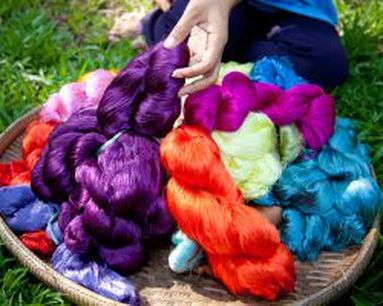
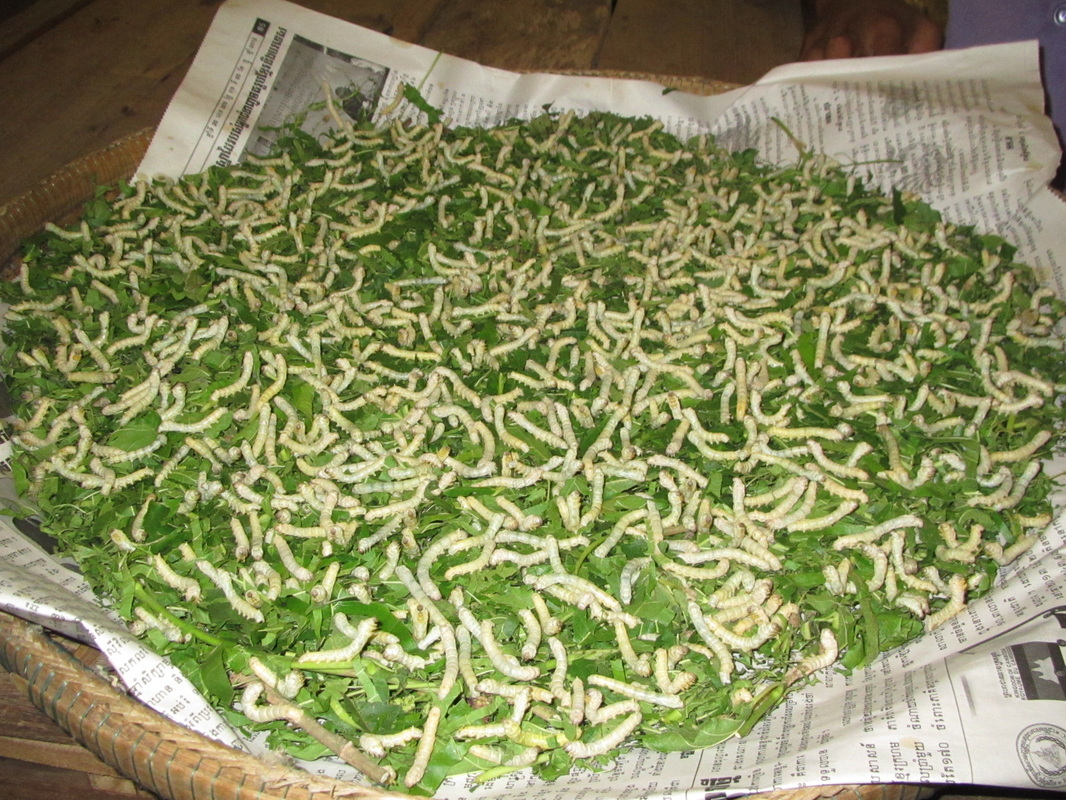
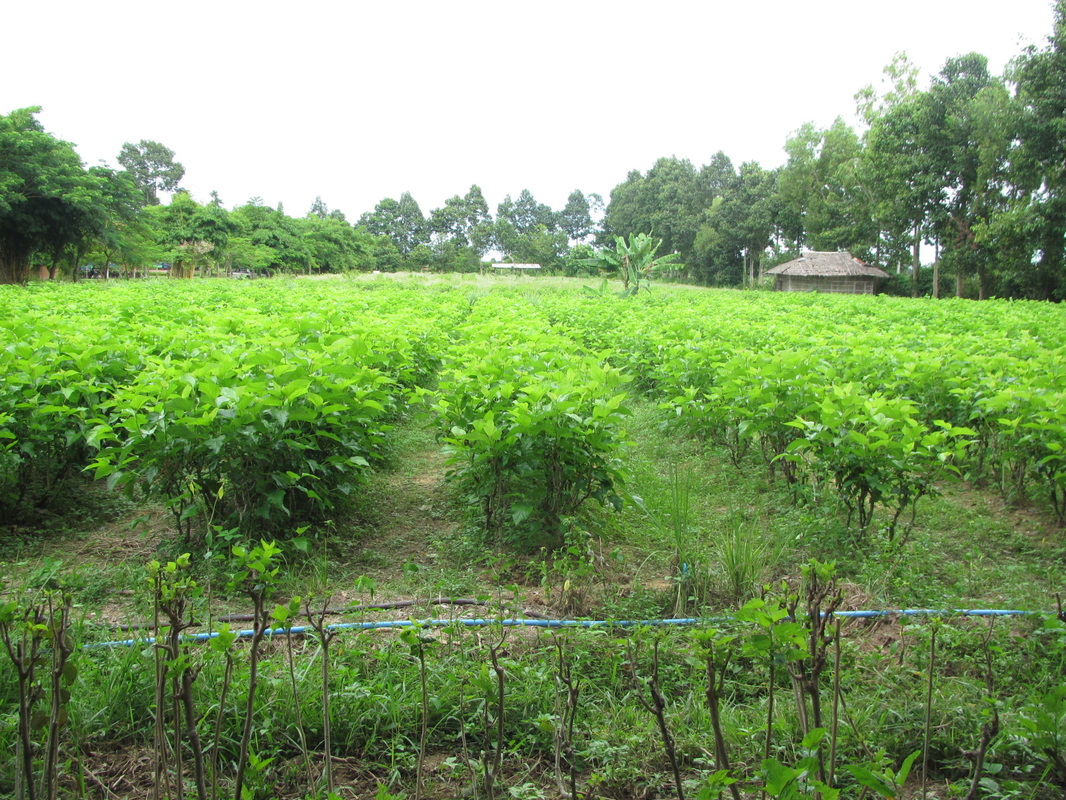
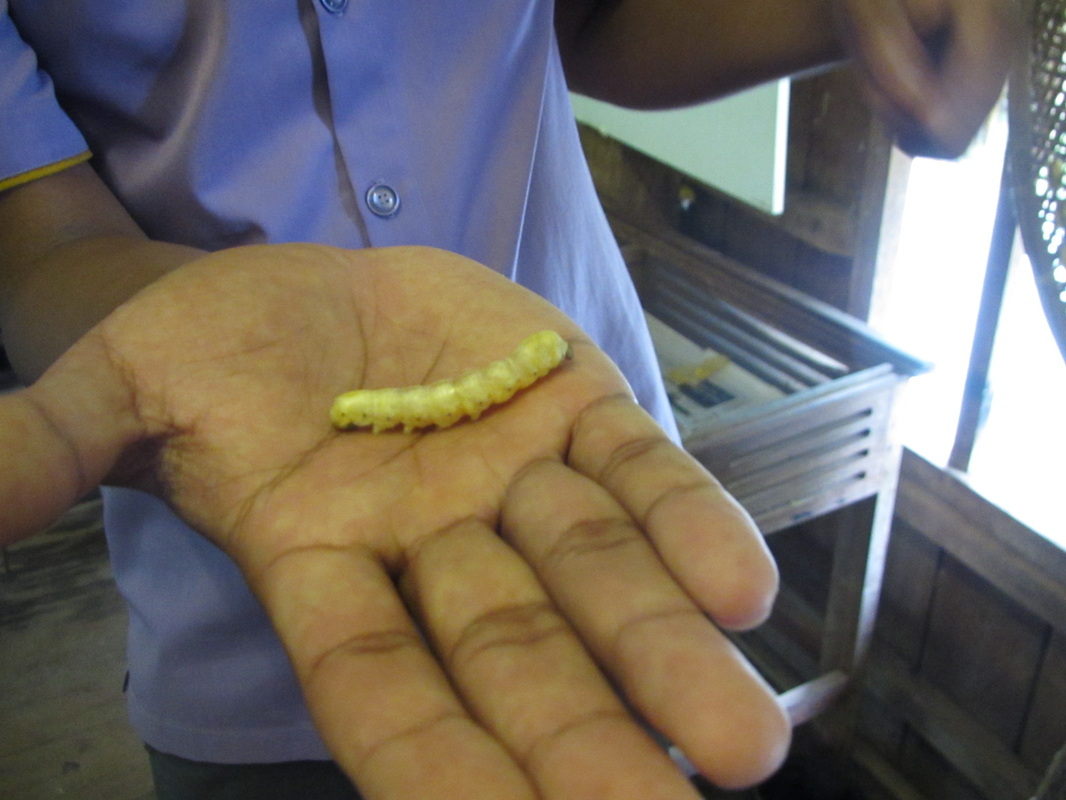
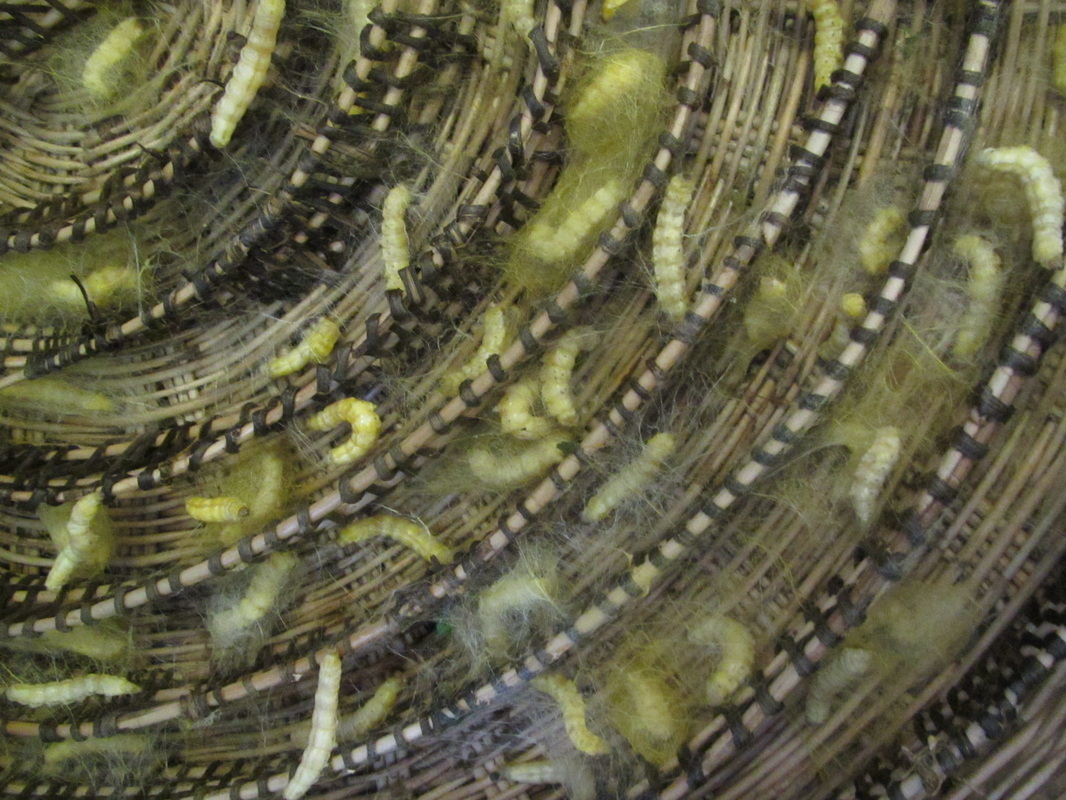
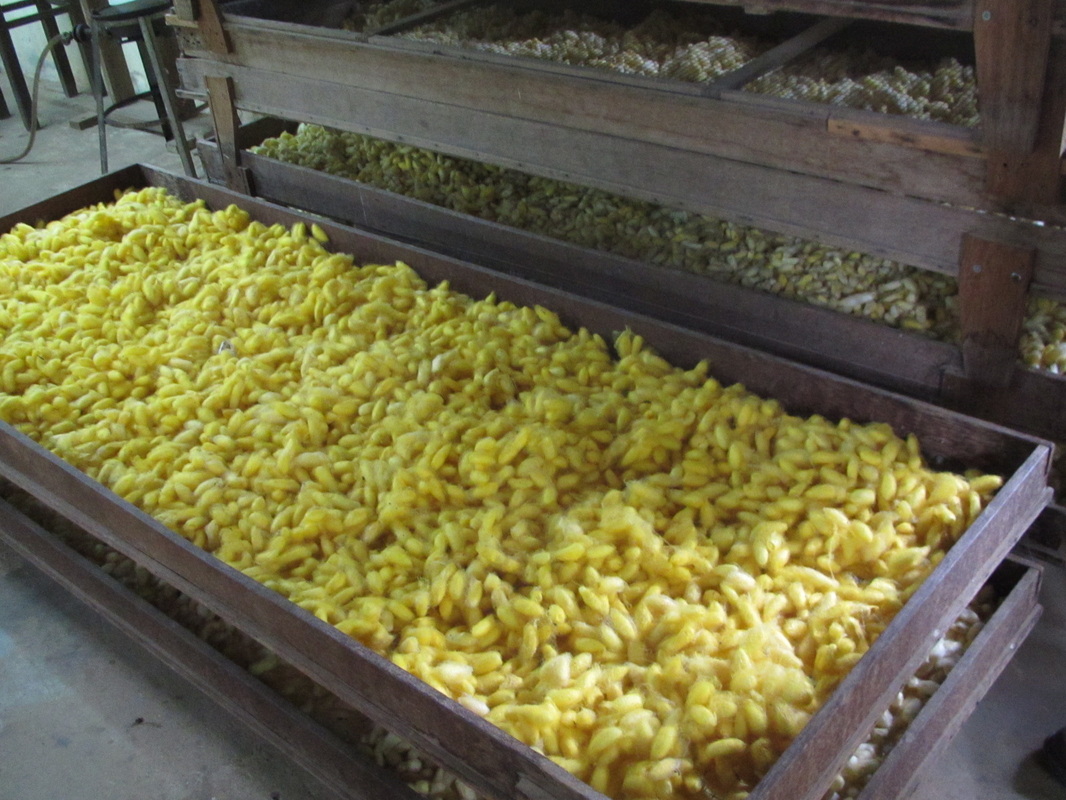
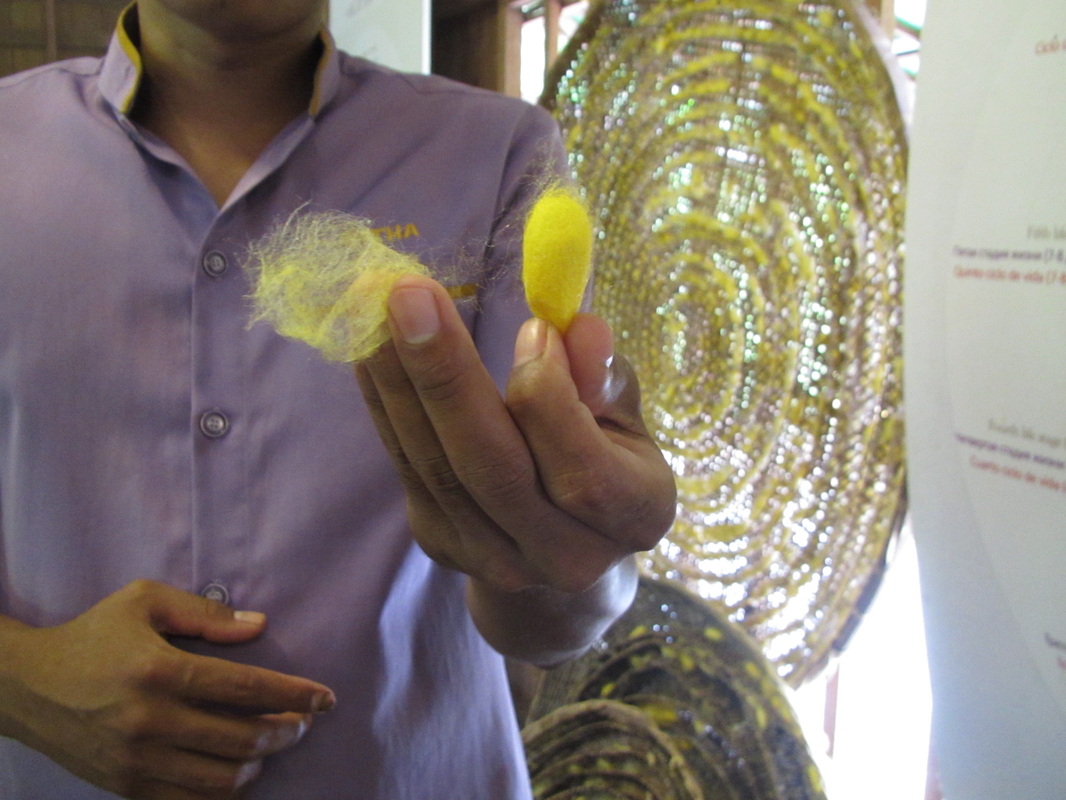
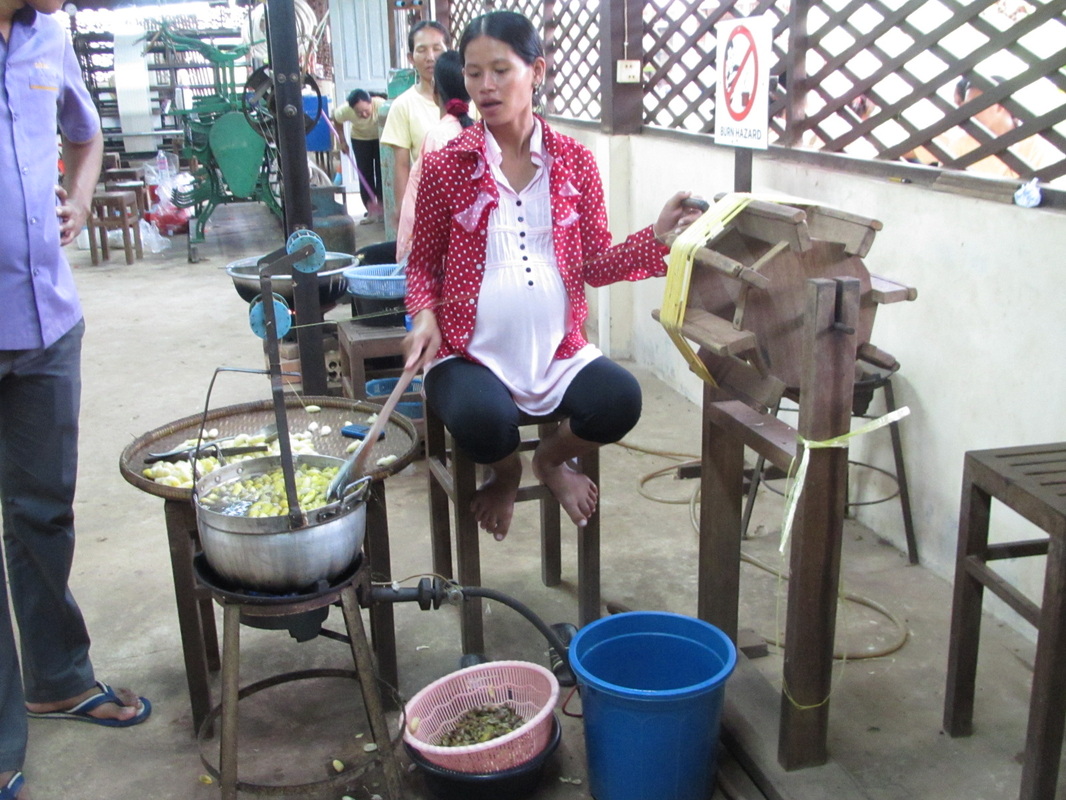
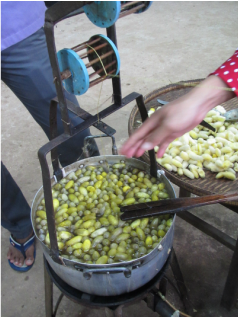
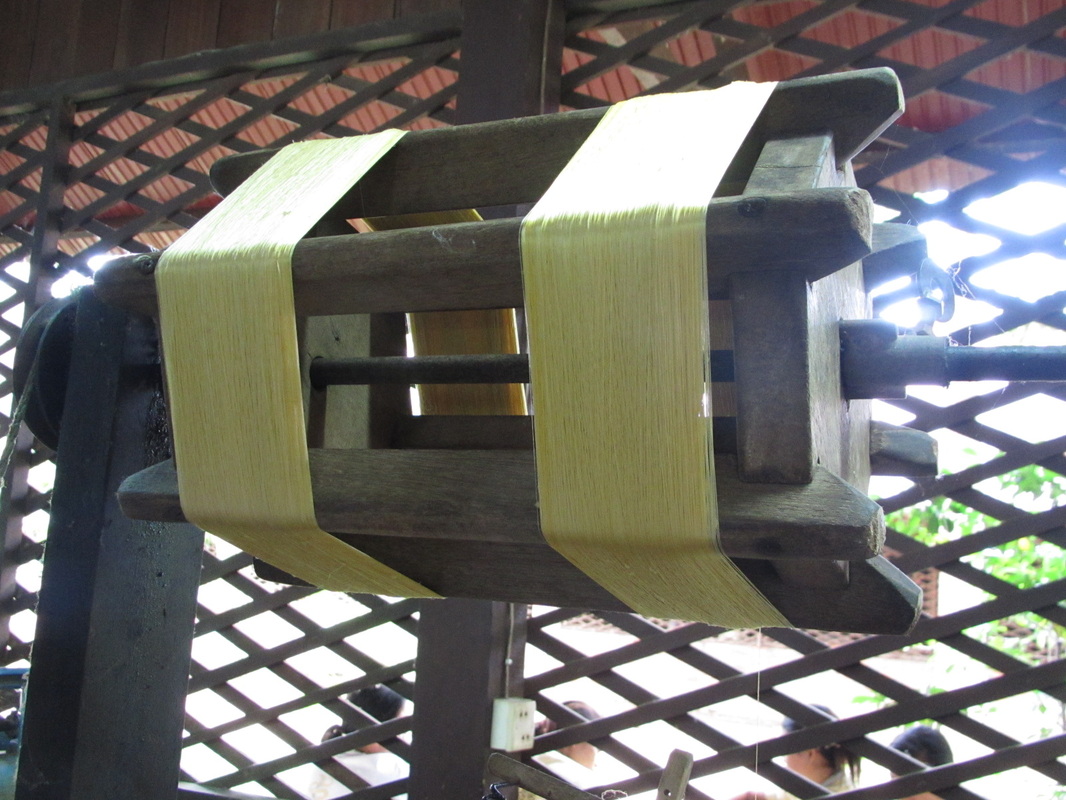
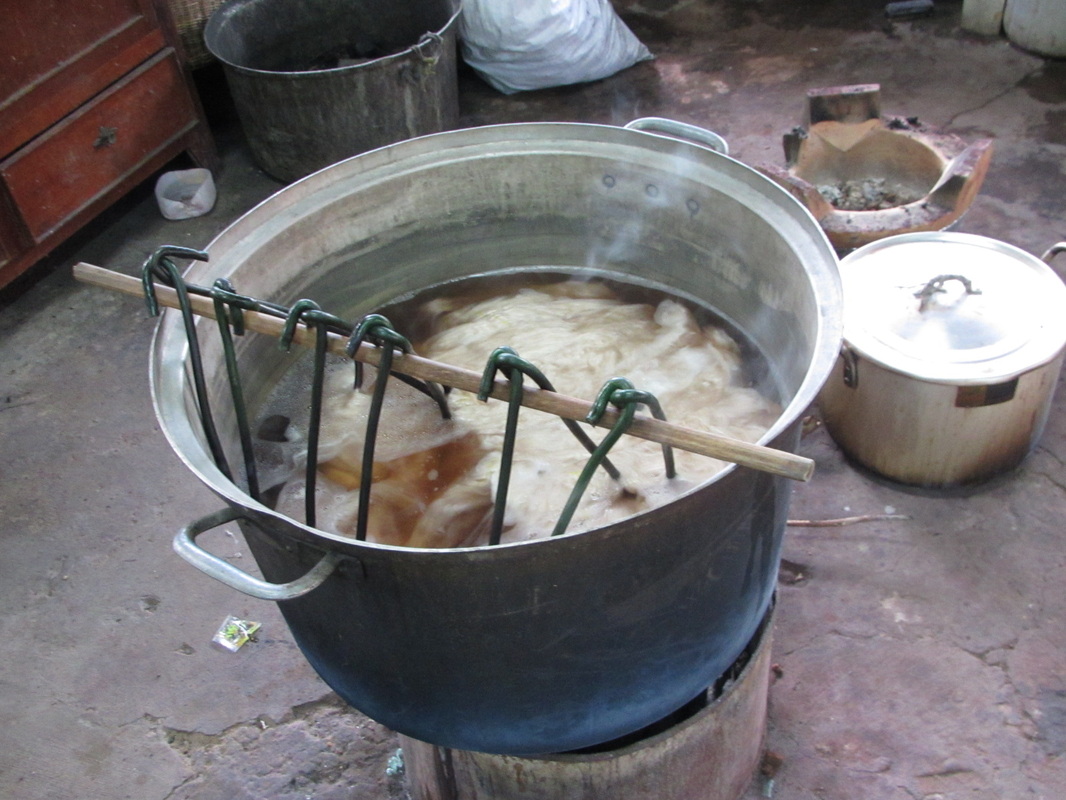
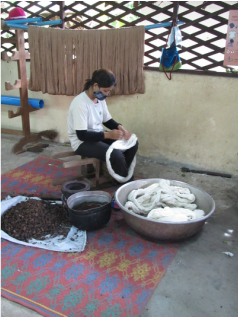
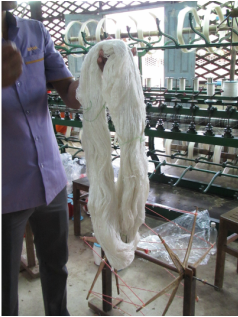

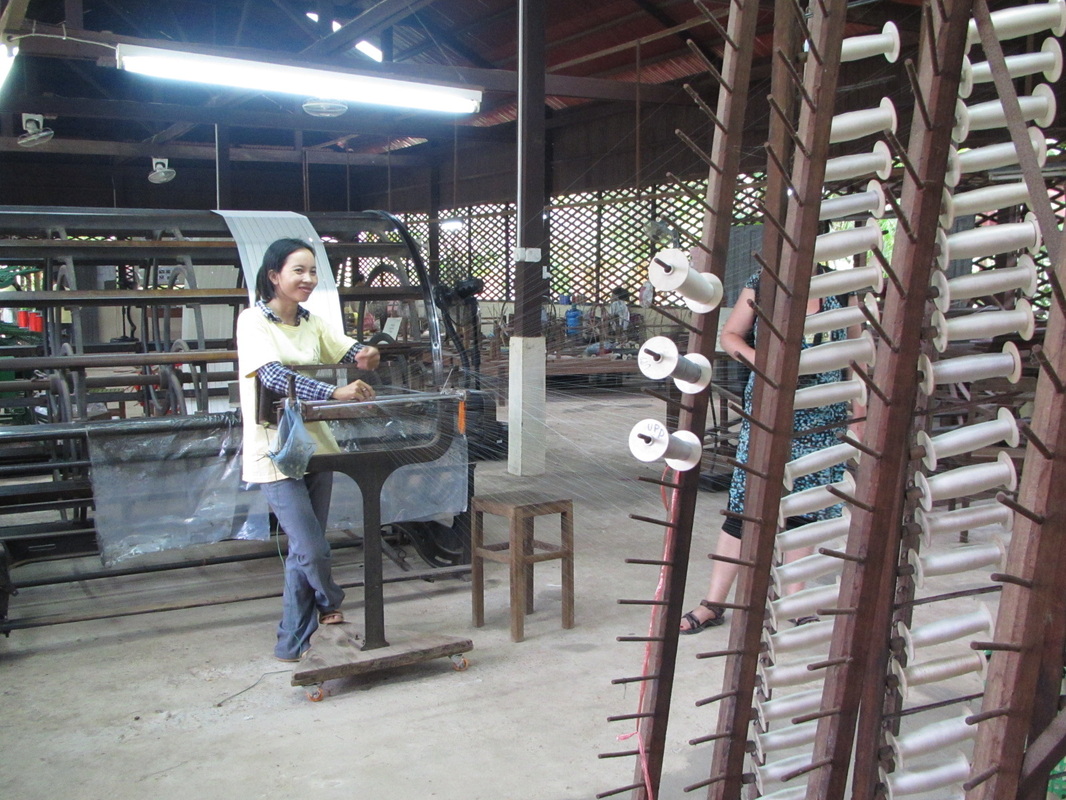
 RSS Feed
RSS Feed